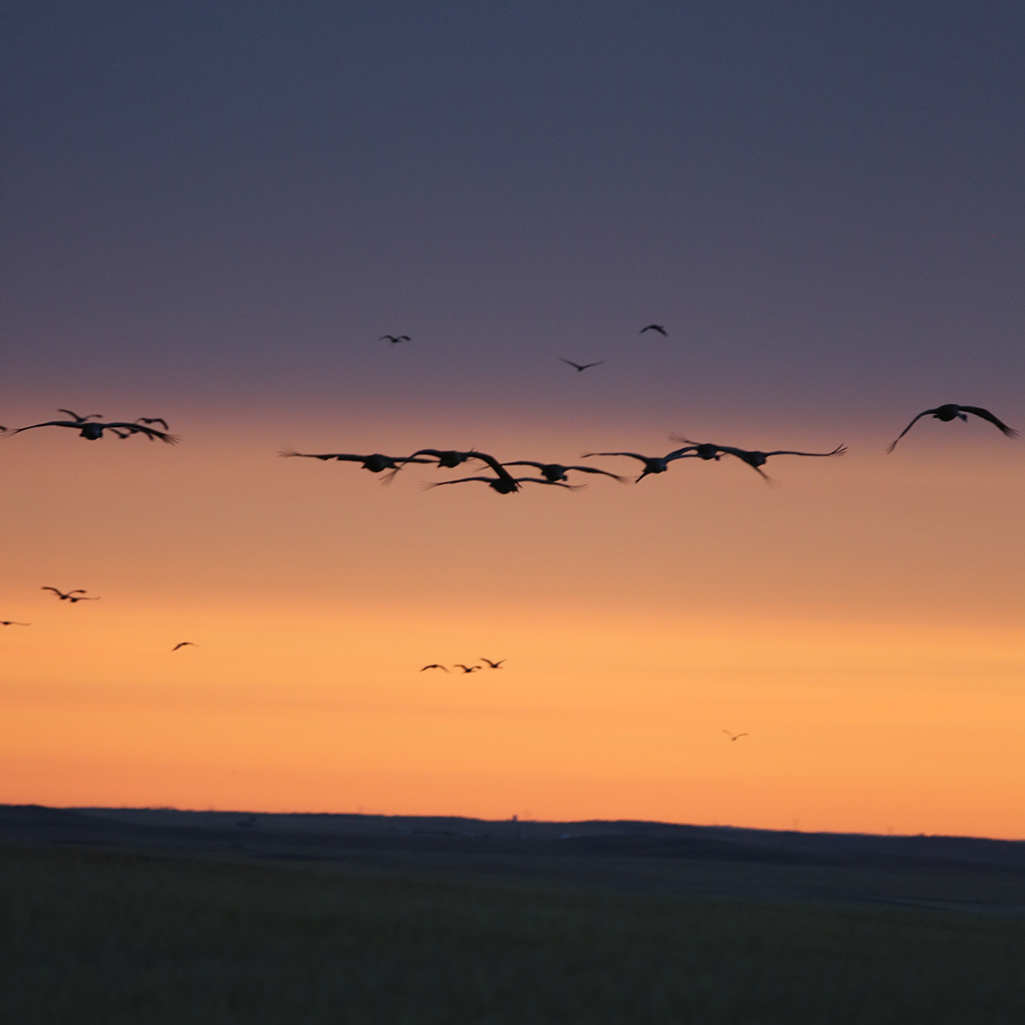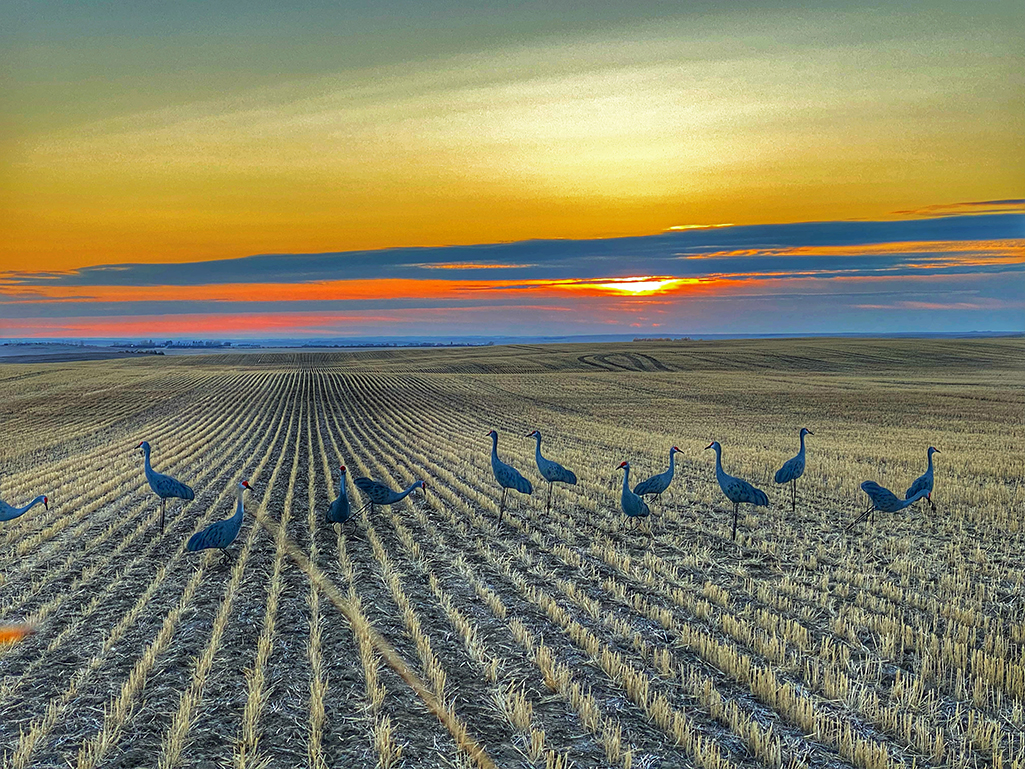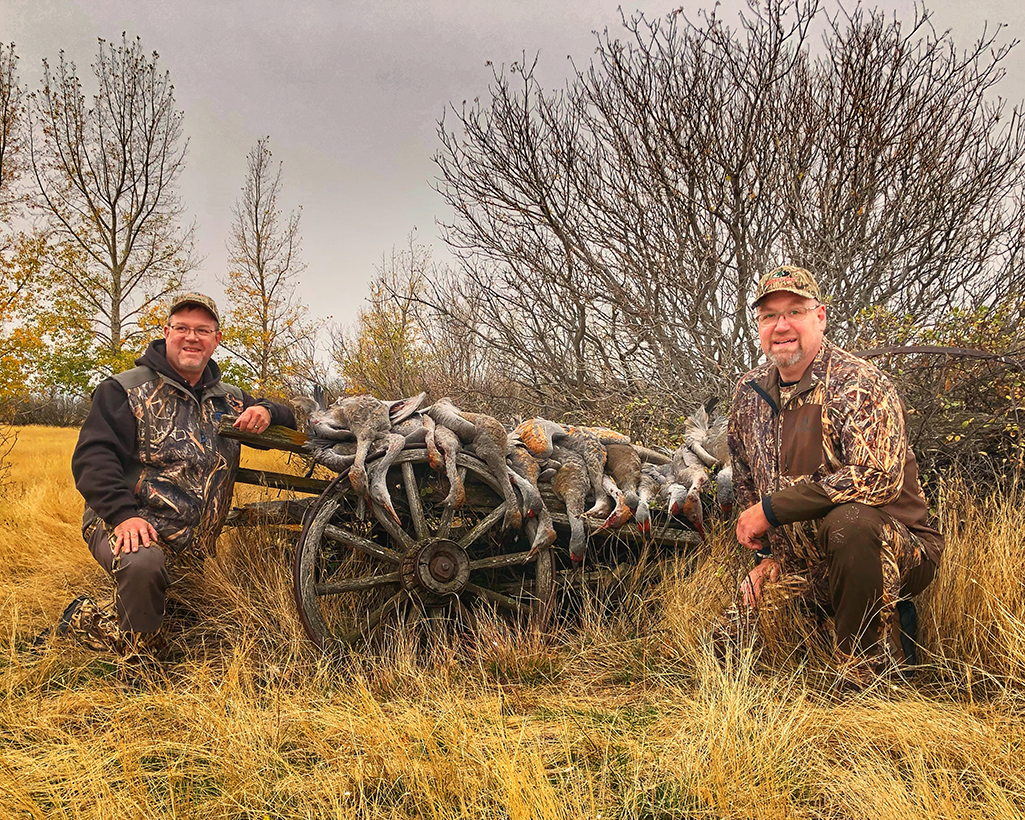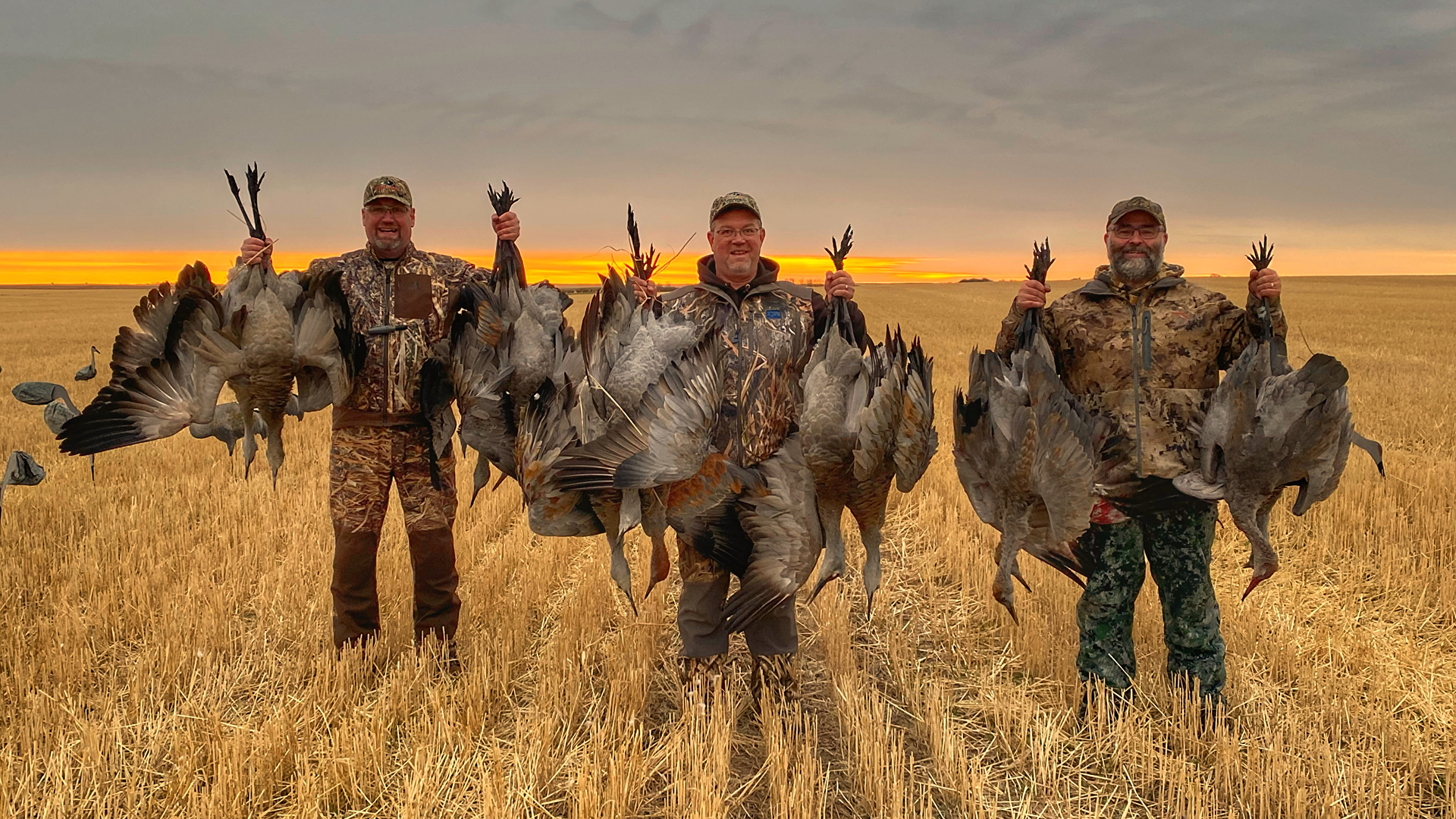Hunting Sandhill Cranes in Southern Saskatchewan
The southern Saskatchewan sunrise was spectacular. The horizon changed from dark orange to red, with a bright purple crescendo. It was exhilarating to know the distant croaking and purring of sandhill cranes coming off their night roost would soon wing close.

Sandhill cranes have not evolved much since the time of the dinosaurs. They migrate and stage through Saskatchewan, headed south in the fall and north in the spring. The massive flocks of cranes return to the same wetlands every year and fatten up in the agricultural fields before heading farther south.
We were hunting with Prairie Goose Outfitters, the Saskatchewan Crane Wrecking Crew. The gents have honed their skills to specialize in sandhill crane hunts and have an exceptional success rate. Homemade, stuffer decoys make a big difference to their decoy spread. They are confidence builders for incoming birds looking to land with birds of the same feather.

Attentions went from watching the horizon change colour to focusing on the strings of cranes that lined the sky. One of our guides worked a double flag and turned a flock of birds winging over the neighbouring field. Before we knew it, cranes were dropping their feet, cupping wings, and bombing into the decoys with reckless abandon. Harvested birds were quickly collected to ensure incoming birds would not flare.

It was a magical morning with thousands of cranes flying over our field for the first 90 minutes of daylight. With birds finishing in the decoys, it did not take long to fill limits, and we took turns shooting the last couple of cranes to round off the numbers.
We sat and watched cranes decoy. The juvenile call is as shrill as a dog whistle, while the red-fore-headed birds croak and cluck with a voice that carries for miles. The wingspan of an adult sandhill crane is impressive at 1.8 metres (6 feet). Adults stand almost one meter (3 feet) tall and obtain full plumage at 2½ years.

The strange life history, appearance, calls, and breeding dance rituals of cranes make them mysterious and misunderstood. Hunting in southern Saskatchewan, the locals have a variety of nicknames for the sandhill crane, calling them "wild turkeys," "pterodactyls," "pumpers" for their dance moves, and "storks." Sandhill cranes are also known as "the ribeye of the sky" and surprise most pleasantly people who have never tried them.
The bird's life history includes a low reproductive rate, birds do not obtain full plumage until 2 1/2 years of age, and they mature at 4 to 5 years. They nest in bogs or on the edge of wetlands and only lay two eggs in a clutch. They can live long lives with birds recorded to be 18 to 24 years old.

Author: Brad Fenson

